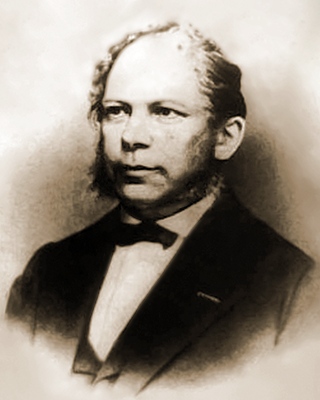Module: Konstantin von Tischendorf
„The first biblical critic in Europe“: Konstantin von Tischendorf (1815-1874)
Originally from an upper middle-class family near Leipzig, Tischendorf studied Classical Greek with a special interest in the New Testament. The PhD thesis of this extraordinarily talented young man was his first critical edition of the Greek New Testament, and in the course of his life he went on, completing eight more critical editions. His whole life he dedicated to the restoration of the original texts of the New Testament, following Bengel, Wetstein, Bentley, Lachmann, and others.
In his first trips, he studied early New Testament manuscripts available in European libraries, for example he took only two years to decipher the Paris Palimpsest (Ms. Paris, Bibliothèque Nationale de France, Grec 9 = “Codex Ephraemi Rescriptus”), which he published in 1843 . The lower text was a manuscript of the Greek New Testament, overwritten by Syriac. At the age of 27, he was already a renowned language professor. Only the oldest New Testament manuscript known at the time, Codex Vaticanus, the one most interesting to him, was not allowed public scrutiny until 1867.
Doubtless, he was already a specialized paleographer when he went to St. Catherine’s monastery in Sinai, presumably a site of ideal conservation conditions for ancient manuscripts, a desert site providing shelter for hermits, never exposed to conquering armies and displaying excellent fortress architecture. It was allegedly founded by the Roman Emperor Justinian (6th century) and was thus a prominent site of Christianity with a continuously operated library. He went there three times:
- 1844: the scholar “rescues” 43 large Greek folios, allegedly from a basket containing fuel for the fire. They are published in 1846 as the Codex Friederico-Augustanus , displayed to the public in the Leipzig university library. Shortly afterward, in 1845, the Russian archimandrite Porphyr Uspensky visits the monastery, gets to see the rest of the New Testament folios (stored in a different location, hence found only in the wake of Tischendorf’s demand). The Russian dates it to 462 and mentions it in his Russian travel account, published in 1856.
- Nobody seems to remember the sensational folios when Tischendorf wants to purchase the rest. He suspects the monks of keeping it away from him (noticing its value to scholarly visitors). He already dated it as having been finalized by 350 CE at the latest, as we will see. Tischendorf got hold of several manuscripts in Arabic and other languages, which might have escaped his scholarly attention, for want of time. On this trip, he would purchase many ancient manuscripts in different languages, some of which he published in facsimile editions in his multi-volume Monumenta sacra inedita , but not find the desired one. He feels in need of support from Orthodoxy’s highest ranks, in order to finance the third trip and purchase and publish it.
- Equipped with a recommendation from the Russian Czar Alexander II (who is married to Marie von Hessen-Darmstadt!), he is allowed to take the manuscript to Alexandria for copying. He issues the library a borrowing receipt. From Cairo, he travels to Jerusalem and to Istanbul, and in a tour de force, he convinces the Russian ambassador (the monastery authority being vacant) to ask the Czar for further support of his manuscript edition project, even financially.
Altogether, Tischendorf had published 7 editions of the New Testament in Greek before editing Codex Sinaiticus. His minute work aimed at „discarding the errors of the scribes.“ By this time he must have known the Greek text practically by heart. His publication of the Sinaiticus was prepared in three years (1859-1862), whereas preparing the edition of Codex Alexandrinus in Paris had taken 14 years (1814-1828). This difference might be due to his expertise in the text and the generous sponsorship of the Russian Emperor’s family. This edition’s top issue was presenting the original text with remarks of past times, in a facsimile form nearly approaching photography .
Read Tischendorf’s early account of his visit to Sinai, in , 218–52 (English: , 95–112). Compare this to more recent research about his trip in one of the following: .
- What was the motivation for Tischendorf’s trip to the Near East in general, and to Sinai specifically, as best you can gather from his own early accounts ?
- Why did Tischendorf not mention finding the leaves of the Codex Sinaiticus in his travel account of 1846?
Respond to one or more of the above questions by annotating relevant passages using Hypothes.is and/or by creating a student project as a new page describing your findings.



